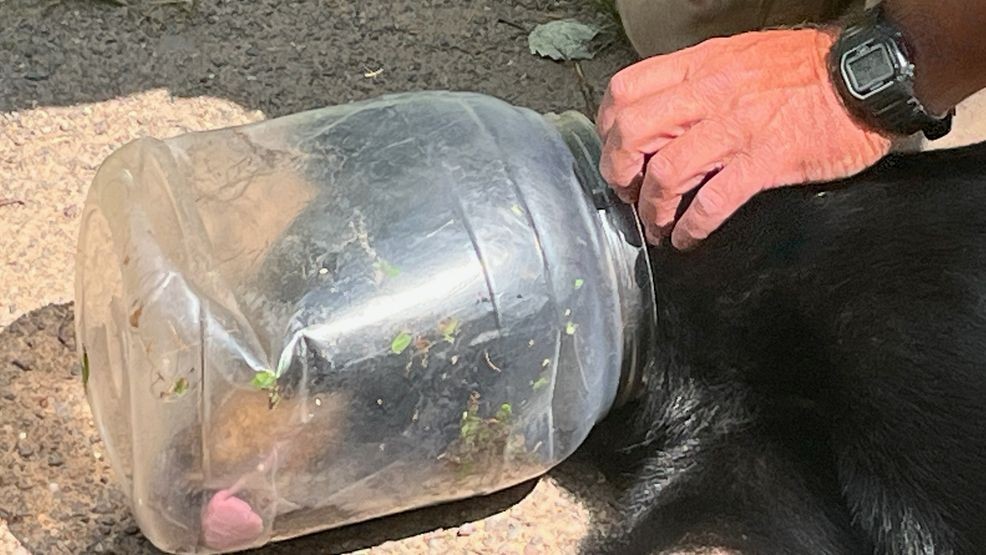CABLE (WLUK) — A bear in northern Wisconsin was freed from a sticky situation with a little help from wildlife officials.
It was back on July 26 when the Wisconsin Department of Natural Resources was notified of a bear in Sawyer County that had a plastic jar stuck on its head. The DNR teamed up with staff from the U.S. Department of Agriculture Wildlife Services to try to rescue the bear from its predicament.
But as it turned out, catching the bear was no easy feat.
From the time it was first observed, the bear traveled nearly 50 miles and was spotted multiple times across northern Sawyer County and in southern Bayfield and Douglas counties. For more than a week, monitoring and live trapping efforts were unsuccessful.
Finally, on Sunday, a trained wildlife professional responded to a report of the wanted bear at a home near Cable and was able to dart the bear with an immobilization drug. Once the bear was sedated, USDA Wildlife Services staffers were able to cut the jug off its head and examine it for injuries. Luckily, none were noted.
Officials then relocated the 70-pound, 2-year-old female bear to a safe, wooded area with plenty of food and water to allow the bear to recover.
The bear was alert when released and quickly began feeding on a patch of berries nearby. Natural food is abundant in northern Wisconsin at this time of year, and the bear’s best chance of survival is in the wild, feeding on naturally occurring food sources.
It’s unknown how long the jug was stuck on the bear’s head, but according to Randy Johnson — a DNR large carnivore specialist — the bear was a little skinny when she was captured.
“There were punctures in the jug — likely from the bear’s claws — and a public observation indicated that it was able to drink by dunking its head in water,” said Johnson. “The bear was likely surviving on body fat reserves (which can be significant on bears by midsummer). A bear of that age and sex normally averages between 100-150 pounds this time of year.”
The bear received two plastic ear tags for identification, consistent with federal law regarding the administration of immobilization drugs in free-ranging wildlife.

